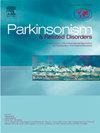Characteristics of hospitalized patients with restless legs syndrome in Hawaiʻi by race/ethnicity
IF 3.4
3区 医学
Q2 CLINICAL NEUROLOGY
引用次数: 0
Abstract
Introduction
Restless legs syndrome (RLS) patient characteristics have not been adequately studied across racial/ethnic groups, including Native Hawaiians and Pacific Islanders (NHPI) and Asian Americans (AA). The goal of this study was to determine if differences exist among NHPI and AA subgroups, and Whites who were hospitalized with RLS in the state of Hawaiʻi.
Methods
A retrospective cross-sectional study using hospital discharge records (2016–2023) from the state of Hawaiʻi statewide registry was conducted. Patients with RLS were identified by the ICD 10 code G25.98. Patient's characteristics across racial/ethnic groups were examined by bivariate analysis with Kruskal-Wallis rank sum tests, Pearson's chi-square tests, and Fisher's exact tests.
Results
We identified 1624 inpatients with RLS. White (48 %) was the largest group, followed by Japanese (15 %), NHPI (15 %), Other (14 %), and Filipino (8 %). Bivariate analysis found differences in age groups, where NHPI were younger (p < 0.001), and with higher proportion of admission with diabetes (p < 0.001) and pregnancy (p = 0.02). Filipino had a significantly higher proportion of patients with a non-English primary language (p < 0.001).
Conclusions
Genetic predisposition, comorbidities, and socioeconomic factors may contribute to differences in RLS characteristics among NHPI, AA, and White patients.
夏威夷不宁腿综合征住院患者的种族/民族特征
不宁腿综合征(RLS)患者的特征尚未在种族/民族群体中进行充分的研究,包括夏威夷原住民和太平洋岛民(NHPI)和亚裔美国人(AA)。本研究的目的是确定在夏威夷州因RLS住院的NHPI和AA亚组以及白人之间是否存在差异。方法利用夏威夷州2016-2023年的出院记录进行回顾性横断面研究。RLS患者通过ICD 10代码G25.98进行识别。通过双变量分析(Kruskal-Wallis秩和检验、Pearson卡方检验和Fisher精确检验)检验不同种族/民族患者的特征。结果共纳入1624例RLS住院患者。白人(48%)是最大的群体,其次是日本人(15%),NHPI(15%),其他(14%)和菲律宾人(8%)。双变量分析发现不同年龄组之间存在差异,NHPI越年轻(p < 0.001),入院时糖尿病(p < 0.001)和妊娠(p = 0.02)的比例越高。菲律宾患者中以非英语为主要语言的比例明显更高(p < 0.001)。结论遗传易感性、合并症和社会经济因素可能导致NHPI、AA和White患者的RLS特征差异。
本文章由计算机程序翻译,如有差异,请以英文原文为准。
求助全文
约1分钟内获得全文
求助全文
来源期刊

Parkinsonism & related disorders
医学-临床神经学
CiteScore
6.20
自引率
4.90%
发文量
292
审稿时长
39 days
期刊介绍:
Parkinsonism & Related Disorders publishes the results of basic and clinical research contributing to the understanding, diagnosis and treatment of all neurodegenerative syndromes in which Parkinsonism, Essential Tremor or related movement disorders may be a feature. Regular features will include: Review Articles, Point of View articles, Full-length Articles, Short Communications, Case Reports and Letter to the Editor.
 求助内容:
求助内容: 应助结果提醒方式:
应助结果提醒方式:


